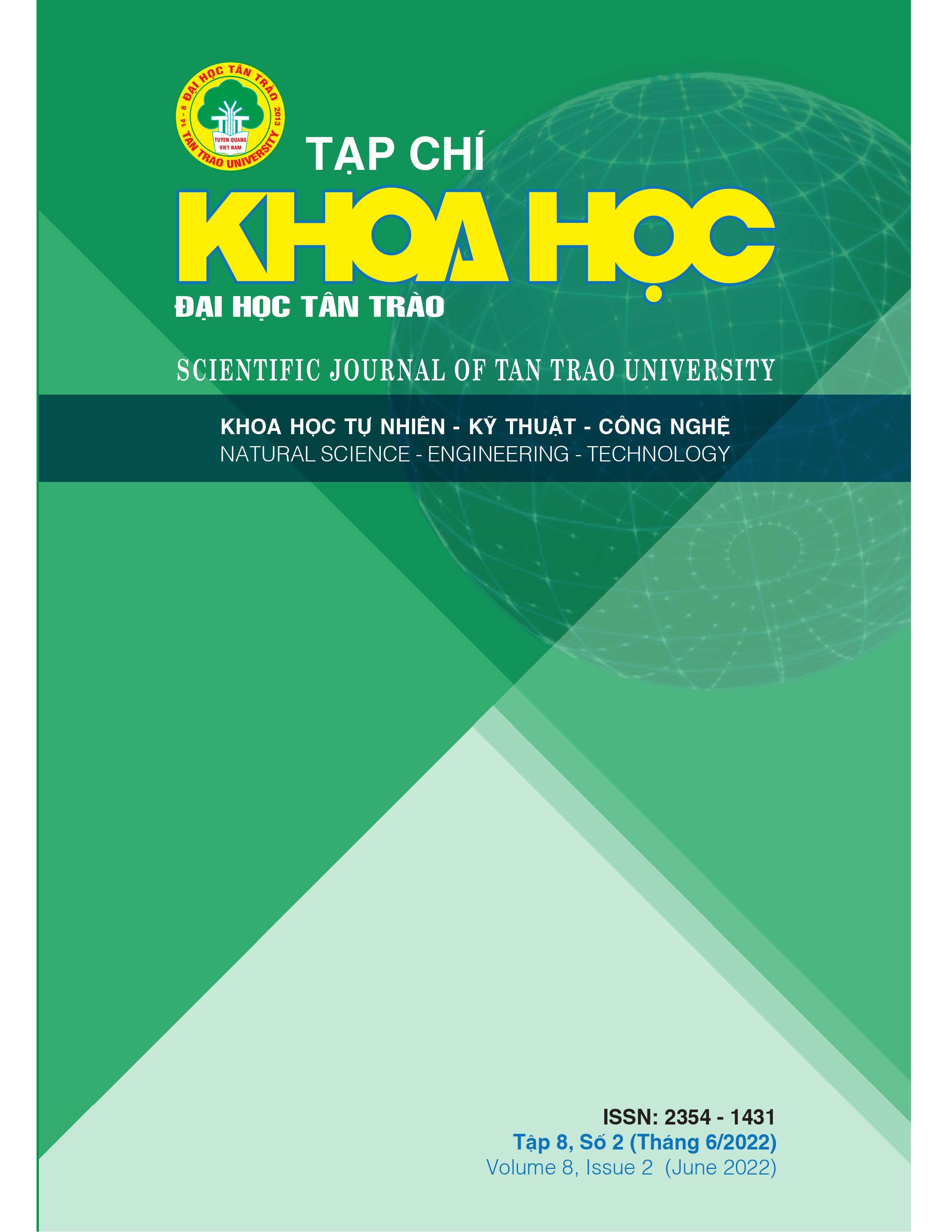RESEARCH ON MODEL OF HOUSEHOLD-SCALE ORGANIC WASTE TREATMENT FOR NEW RURAL CONSTRUCTION
DOI:
https://doi.org/10.51453/2354-1431/2022/755Keywords:
Organic waste treatment, incubation methodAbstract
The research was carried out in the laboratory of the Faculty of Environment, Thai Nguyen University of Agriculture and Forestry. The results showed the indicators of temperature, humidity, smell, pH and humus of organic fertilizer after incubation in different incubation methods. Using incubated methods including Fixed tank incubation method, compost bin incubation method, incubation method by a banana circle, fixed pit composting method. The testing and analysis of basic indicators to choose the optimal effective method for household scale, thereby serving rural construction
Downloads
References
[1] Chen, T., Zhang, S., & Yuan, Z. (2020). Adoption of solid organic waste composting products: A critical review. Journal of Cleaner Production, 272, 122712.
[2] Vo Anh Khue, Huynh Huy Viet. (2021). Research on a new type of trash bin used to compost plant waste into organic fertilizer. Journal of Environment.
[3] Bui Huy Hien. (2015). Organic fertilizers in sustainable agricultural production in Vietnam. Journal of Agriculture and Rural Development.
[4] Do Thi Lan. (2018). Building rural waste treatment models at commune level of Bac Kan province, Journal of University of Thai Nguyen’s Science and Technology 185(09): 51 – 56.
[5] Nguyen Thi Phuong, Nguyen My Hoa and Do Thi Xuan. (2018). Production and evaluation of the effectiveness of microbial organic fertilizers from sludge from breweries and seafood processing plants on vegetable production. Journal of Can Tho University’s Science.
[6] Nguyen Vu Hoang Phuong (2018). Applying GIS in municipal solid waste management in Binh Tho ward, Thu Duc district, Ho Chi Minh city, Journal of Science, Technology and Food, 15(1), 76-86.
[7] Do Thuy Trang & Ngo Thi Ngoc Bich (2021). Domestic waste pollution in rural Vietnam: Situation, causes and solutions. OSF Preprints, 17.
Downloads
Published
How to Cite
Issue
Section
License

This work is licensed under a Creative Commons Attribution-ShareAlike 4.0 International License.
All articles published in SJTTU are licensed under a Creative Commons Attribution-ShareAlike 4.0 International (CC BY-SA) license. This means anyone is free to copy, transform, or redistribute articles for any lawful purpose in any medium, provided they give appropriate attribution to the original author(s) and SJTTU, link to the license, indicate if changes were made, and redistribute any derivative work under the same license.
Copyright on articles is retained by the respective author(s), without restrictions. A non-exclusive license is granted to SJTTU to publish the article and identify itself as its original publisher, along with the commercial right to include the article in a hardcopy issue for sale to libraries and individuals.
Although the conditions of the CC BY-SA license don't apply to authors (as the copyright holder of your article, you have no restrictions on your rights), by submitting to SJTTU, authors recognize the rights of readers, and must grant any third party the right to use their article to the extent provided by the license.


